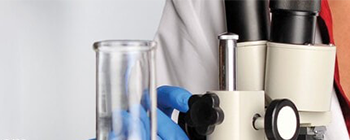Learn More
Phospho-BTK/ITK (Tyr551, Tyr511) Monoclonal Antibody (M4G3LN), PE, eBioscience™, Invitrogen™
Mouse Monoclonal Antibody
Supplier: Invitrogen 12901541
Description
Description: This M4G3LN monoclonal antibody recognizes human and mouse Bruton's tyrosine kinase (also known as BTK, agammaglobulinaemia tyrosine kinase, B-cell progenitor kinase)/interleukin-2-inducible tyrosine kinase (also known as ITK, T-cell-specific kinase, Tyrosine-protein kinase Lyk) when phosphorylated on Y551 and Y511, respectively. In addition to Src family and SYK family kinases, B cells and T cells express a third family of receptor-proximal kinases called the Tec kinase family. The B cell-specific Tec family kinase is BTK; T cells express ITK as well as Tec and Rlk. Tec family kinases play an indispensable role in activation of phospholipase C and activation of calcium-dependent signaling cascades following antigen receptor triggering. BTK has been implicated in propagating signals downstream of LPS-TLR4 in B cells via signaling through the TLR4 co-receptor RP105/CD180. Mice congenitally lacking BTK or ITK show profound defects in B cell or T cell development and signaling, respectively. People with mutations or deletions in BTK suffer from X-linked agammaglobulinemia and X-linked immunodeficiency. Specificity of this M4G3LN clone was determined by ELISA, flow cytometry, and western blotting. Applications Reported: This M4G3LN antibody has been reported for use in intracellular staining followed by flow cytometric analysis.
Applications Tested: This M4G3LN antibody has been pre-titrated and tested by intracellular staining followed by flow cytometric analysis of stimulated normal human peripheral blood cells. This can be used at 5 μL (1 μg) per test. A test is defined as the amount (μg) of antibody that will stain a cell sample in a final volume of 100 μL. Cell number should be determined empirically but can range from 10^5 to 10^8 cells/test. Staining Protocol: All protocols work well for this monoclonal antibody. Use of Protocol A: Two-step protocol: intracellular (cytoplasmic) proteins allows for the greatest flexibility for detection of surface and intracellular (cytoplasmic) proteins. Use of Protocol B: One-step protocol: intracellular (nuclear) proteins is recommended for staining of transcription factors in conjunction with surface and phosphorylated intracellular (cytoplasmic) proteins. Protocol C: Two-step protocol: Fixation/Methanol allows for the greatest discrimination of phospho-specific signaling between unstimulated and stimulated samples, but with limitations on the ability to stain specific surface proteins (refer to "Clone Performance Following Fixation/Permeabilization" located in the Best Protocols Section under the Resources tab online). All Protocols can be found in the Flow Cytometry Protocols: "Staining Intracellular Antigens for Flow Cytometry Protocol" located in the Best Protocols Section under the Resources tab online. Excitation: 488-561 nm; Emission: 578 nm; Laser: Blue Laser, Green Laser, Yellow-Green Laser. Filtration:0.2 μm post-manufacturing filtered. In addition to Src family and SYK family kinases, B cells and T cells express a third family of receptor-proximal kinases called the Tec kinase family. The B cell-specific Tec family kinase is BTK; T cells express ITK as well as Tec and Rlk. Tec family kinases play an indispensable role in activation of phospholipase C and activation of calcium-dependent signaling cascades following antigen receptor triggering. BTK has been implicated in propagating signals downstream of LPS-TLR4 in B cells via signaling through the TLR4 co-receptor RP105/CD180. Mice congenitally lacking BTK or ITK show profound defects in B cell or T cell development and signaling, respectively. People with mutations or deletions in BTK suffer from X-linked agammaglobulinemia and X-linked immunodeficiency.Specifications
| Phospho-BTK/ITK (Tyr551, Tyr511) | |
| Monoclonal | |
| 5 μL/Test | |
| PBS with 0.1% gelatin, 0.2% BSA and 0.09% sodium azide; pH 7.2 | |
| Q06187, Q08881, P35991, Q03526 | |
| BTK, ITK | |
| Affinity chromatography | |
| RUO | |
| 12229, 16428, 3702, 695 | |
| 4° C, store in dark, DO NOT FREEZE! | |
| Liquid |
| Flow Cytometry | |
| M4G3LN | |
| PE | |
| ITK | |
| agammaglobulinaemia tyrosine kinase; AGMX1; ATK; B-cell progenitor kinase; BPK; Bruton agammaglobulinemia tyrosine kinase; Bruton′s tyrosine kinase; domit-negative kinase-deficient Brutons tyrosine kinase; truncated Bruton agammaglobulinemia tyrosine kinase; tyrosine-protein kinase BTK isoform (lacking exon 13 to 17); tyrosine-protein kinase BTK isoform (lacking exon 14); EMT, LYK, PSCTK2, IL-2-inducible T cell kinase; homolog of mouse T-cell itk/tsk; IL-2-inducible T cell kinase; IL-2-inducible T-cell kinase; IL2-inducible T-cell kinase; interleukin-2-inducible T cell kinase; interleukin-2-inducible T-cell kinase; kinase EMT; T-cell-specific kinase; tyrosine-protein kinase ITK/TSK; tyrosine-protein kinase LYK | |
| Mouse | |
| 25 Tests | |
| Primary | |
| Human, Mouse | |
| Antibody | |
| IgG2b κ |
For Research Use Only.



